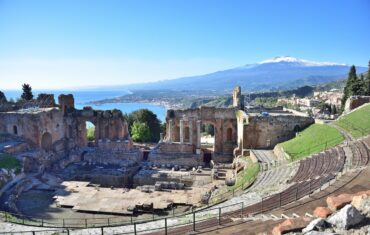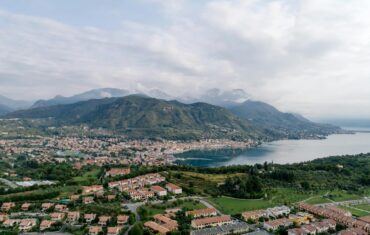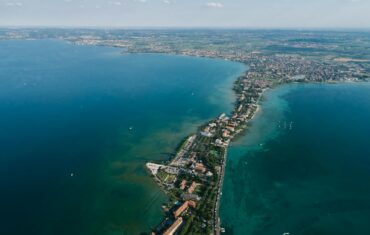When most people think of Italy, they immediately think of Italian—the melodious language of opera, art, and romance. But did you know that Italy is home to a rich tapestry of languages, each with its own unique history and cultural significance? From the Alps in the north to the sun-drenched islands in the south, Italy’s linguistic diversity is as fascinating as its landscapes. Join us on a journey through the different languages of Italy, and discover the hidden linguistic gems that make this country so culturally rich.
1. Standard Italian: The National Language
The Birth of Modern Italian
Standard Italian, the official language of Italy, is derived from the Tuscan dialect, particularly the Florentine variety spoken by Dante Alighieri, Petrarch, and Boccaccio. During the Renaissance, the works of these literary giants helped elevate Tuscan as the language of culture and art. Over time, this dialect evolved into what we now know as modern Italian, which was adopted as the country’s official language after the unification of Italy in the 19th century.
The Language of Unity
Today, Standard Italian is spoken by nearly everyone in Italy and serves as the primary language for education, media, and government. However, it’s important to remember that Italian is just one of many languages spoken in this diverse country.
2. Regional Dialects: The Heartbeat of Local Identity
A Mosaic of Dialects
Despite the dominance of Standard Italian, Italy’s regional dialects remain vibrant and widely spoken. These dialects are not merely variations of Italian but distinct languages with their own grammar, vocabulary, and pronunciation. The use of dialects is deeply tied to local identity and culture, reflecting the historical fragmentation of the Italian peninsula before unification.
- Neapolitan: Spoken in Naples and the surrounding Campania region, Neapolitan is famous for its musicality and rich expressions. It has even influenced popular Italian music, with many classic songs originally written in Neapolitan.
- Sicilian: On the island of Sicily, Sicilian is still widely spoken. It’s a language with deep roots in the island’s complex history, incorporating elements from Greek, Arabic, Norman, and Spanish.
- Venetian: In the Veneto region, Venetian is spoken in cities like Venice, Verona, and Padua. It has a distinct rhythm and is known for its poetic qualities, as well as its influence on the language of the Republic of Venice.
The Role of Dialects Today
While younger generations may be more fluent in Standard Italian, regional dialects continue to be an important part of daily life, particularly in rural areas and among older residents. Dialects are often spoken at home, in local markets, and during traditional festivities, helping to preserve the unique cultural heritage of each region.
3. Minority Languages: Italy’s Hidden Linguistic Treasures
Protected Languages
Italy is also home to several minority languages, recognized and protected by law. These languages are spoken by communities that have historically lived in specific regions of the country, often near the borders.
- German and Ladin in South Tyrol: In the autonomous province of South Tyrol, both German and Ladin are spoken alongside Italian. The region’s unique linguistic landscape reflects its history as part of the Austro-Hungarian Empire before it became part of Italy after World War I.
- Slovene in Friuli Venezia Giulia: Along the border with Slovenia, the Slovene language is spoken by a minority community. It’s a reminder of the historical and cultural ties between this region and its Slavic neighbors.
- Sardinian: On the island of Sardinia, Sardinian (Sardu) is spoken by around a million people. Sardinian is considered the most conservative Romance language, retaining many features from Latin that have disappeared in other languages.
- Albanian (Arbëreshë) in Southern Italy: The Arbëreshë language is spoken by a small Albanian-speaking minority in southern Italy, descendants of refugees who fled the Ottoman invasion in the 15th century.
Cultural Significance
These minority languages are not just modes of communication; they are integral to the cultural identity of their speakers. Many of these communities actively work to preserve their languages through education, literature, and cultural events.
4. Italy’s Linguistic Landscape Today
Multilingualism in Modern Italy
Today, Italy is a multilingual country where Standard Italian coexists with regional dialects and minority languages. In recent decades, the country has also seen an increase in immigrant languages, further enriching its linguistic diversity. Languages like Arabic, Romanian, and Chinese are now spoken in Italy’s larger cities, contributing to the country’s evolving linguistic landscape.
The Future of Italy’s Languages
While Standard Italian will likely continue to dominate, efforts to preserve regional dialects and minority languages are crucial for maintaining Italy’s cultural richness. Programs that promote bilingual education, the teaching of dialects in schools, and the documentation of endangered languages play a vital role in ensuring that Italy’s linguistic heritage is passed down to future generations.
Wrap-Up: A Linguistic Journey Through Italy
Italy’s diverse linguistic landscape is a testament to its rich cultural history and regional identities. From the melodic rhythms of Neapolitan and the ancient roots of Sardinian to the protected minority languages of South Tyrol and Friuli Venezia Giulia, the languages of Italy offer a fascinating glimpse into the country’s soul. Whether you’re exploring the bustling streets of Naples, the quiet villages of Sardinia, or the multicultural cities of the north, listening to the local language is one of the best ways to connect with the heart of Italy. So, as you travel through this beautiful country, take the time to appreciate the unique sounds and stories of each region—you’ll find that Italy’s linguistic diversity is as enchanting as its landscapes.








